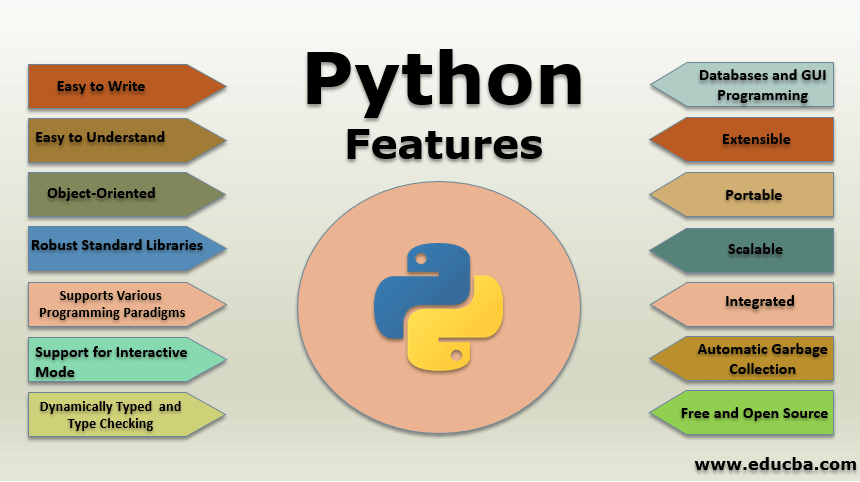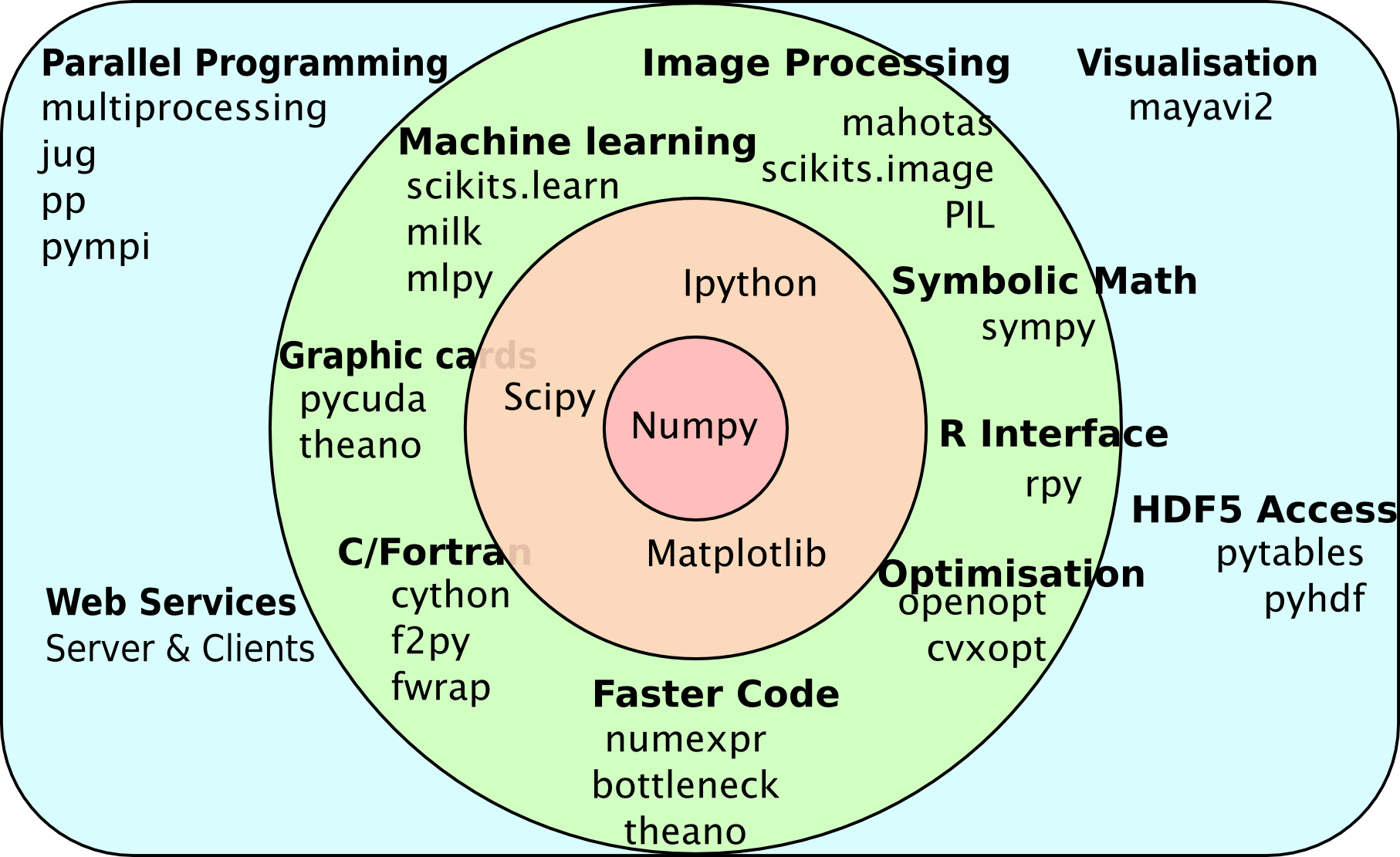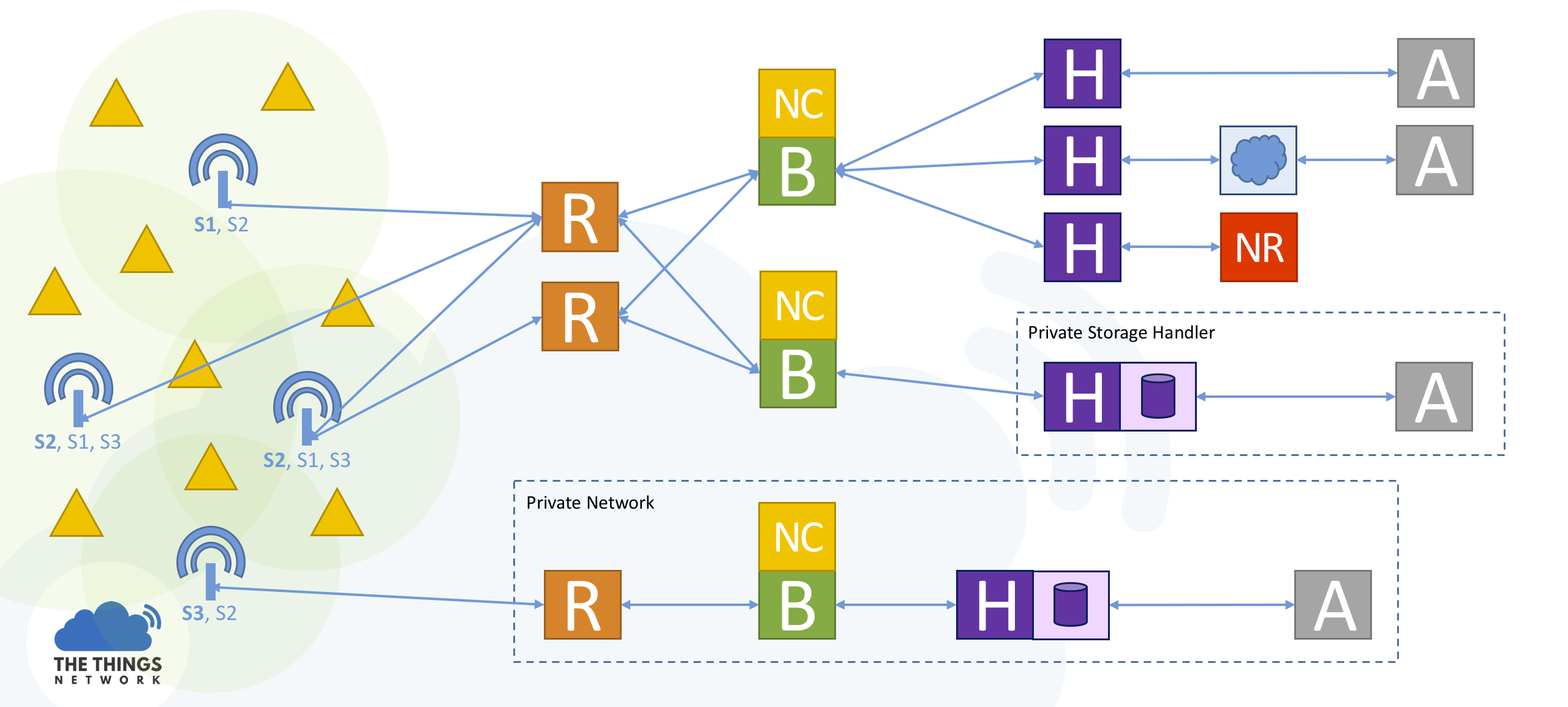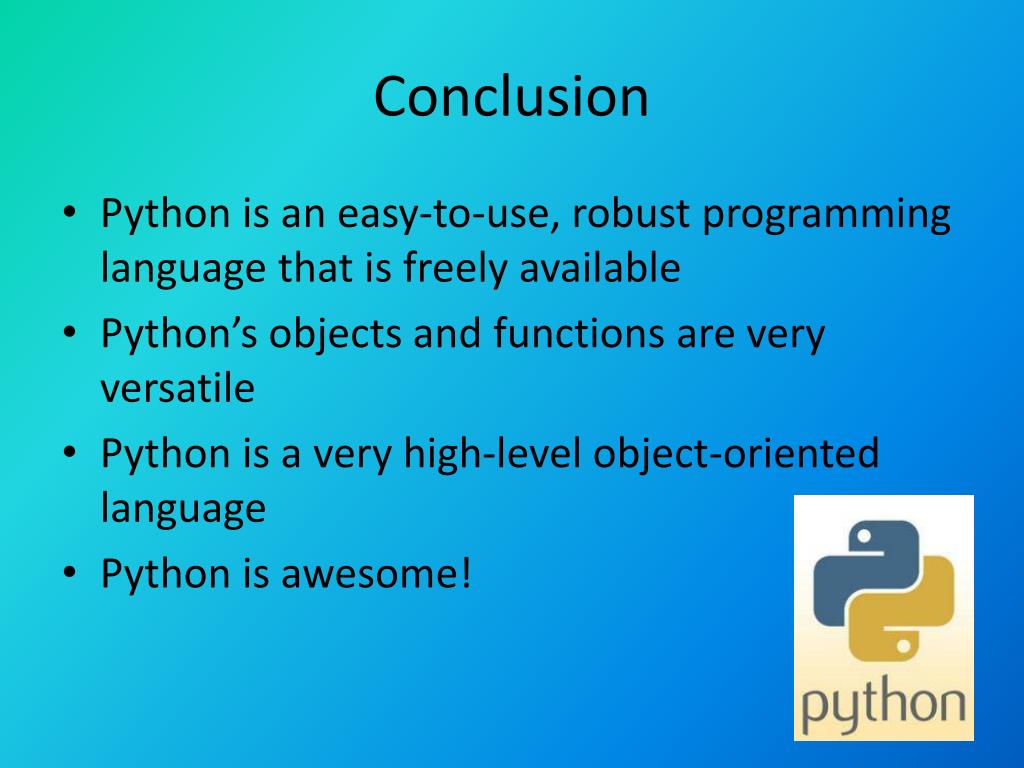Python Presentation
| Introduction to Python | ||
|---|---|---|
| Python is a high-level programming language. It was created by Guido van Rossum and first released in 1991. Python is known for its simplicity and readability, making it a popular choice among beginners. | ||
| 1 | ||
| Key Features of Python | ||
|---|---|---|
| Python is an interpreted language, allowing for faster development and testing. It supports multiple programming paradigms, including procedural, object-oriented, and functional programming. Python has a large standard library, providing ready-to-use modules for various tasks. | ||
| 2 | ||
| Python's Usability | ||
|---|---|---|
| Python has a clear and expressive syntax, making it easy to write and understand code. It offers dynamic typing, allowing for flexible and rapid development. Python supports automatic memory management, reducing the burden of memory allocation and deallocation. | ||
| 3 | ||
| Python's Versatility | ||
|---|---|---|
| Python can be used for web development, with frameworks like Django and Flask. It is widely used in data analysis and scientific computing, with libraries such as NumPy and Pandas. Python has extensive support for automation and scripting, making it a valuable tool for system administration. | ||
| 4 | ||
| Python's Community and Ecosystem | ||
|---|---|---|
| Python has a large and active community, with numerous online resources and forums for support. The Python Package Index (PyPI) hosts thousands of third-party libraries and packages. The community-driven development process ensures continuous improvement and innovation in the Python ecosystem. | ||
| 5 | ||
| Python's Performance | ||
|---|---|---|
| While Python is not as performant as low-level languages like C or C++, it offers good performance for most applications. Performance-critical sections can be optimized using native extensions or by leveraging other languages through Python bindings. Python's performance can be further enhanced by using JIT (Just-in-Time) compilers like PyPy. |  | |
| 6 | ||
| Python's Scalability | ||
|---|---|---|
| Python can handle large-scale projects due to its modular and extensible nature. It supports multiprocessing and threading for concurrent execution. Distributed computing frameworks like Apache Spark and Dask enable Python to scale across clusters. | ||
| 7 | ||
| Python in Machine Learning and Artificial Intelligence | ||
|---|---|---|
| Python has become the de facto language for machine learning and AI research and development. Libraries like TensorFlow, Keras, and PyTorch provide powerful tools for building and training models. Python's simplicity and readability facilitate rapid experimentation and prototyping in these domains. | ||
| 8 | ||
| Python in Education | ||
|---|---|---|
| Python's ease of use and gentle learning curve make it an ideal language for teaching programming. Many educational institutions worldwide use Python as their primary language for computer science courses. Python's extensive documentation and wealth of educational resources make it accessible to learners of all levels. | ||
| 9 | ||
| Conclusion | ||
|---|---|---|
| Python's simplicity, versatility, and strong community support make it a popular choice for various domains. Its wide range of applications, from web development to data analysis and AI, make it a valuable tool for developers. With its continuous evolution and growing ecosystem, Python is poised to remain a leading programming language in the future. | ||
| 10 | ||








